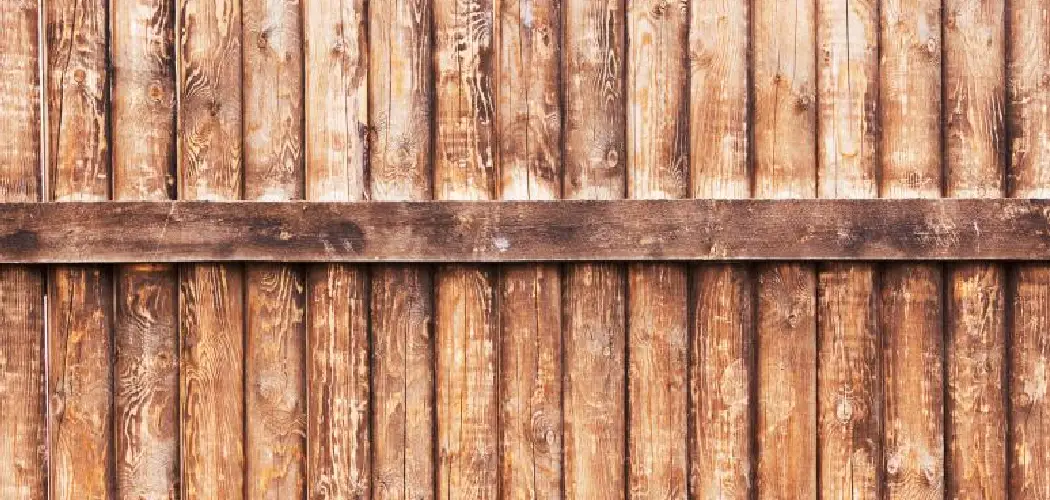Revitalizing the appearance of an old fence is a rewarding DIY project that can transform the entire aesthetic of your outdoor space. Over time, exposure to the elements can leave fences weathered and worn, but with a bit of creativity and effort, you can breathe new life into them.
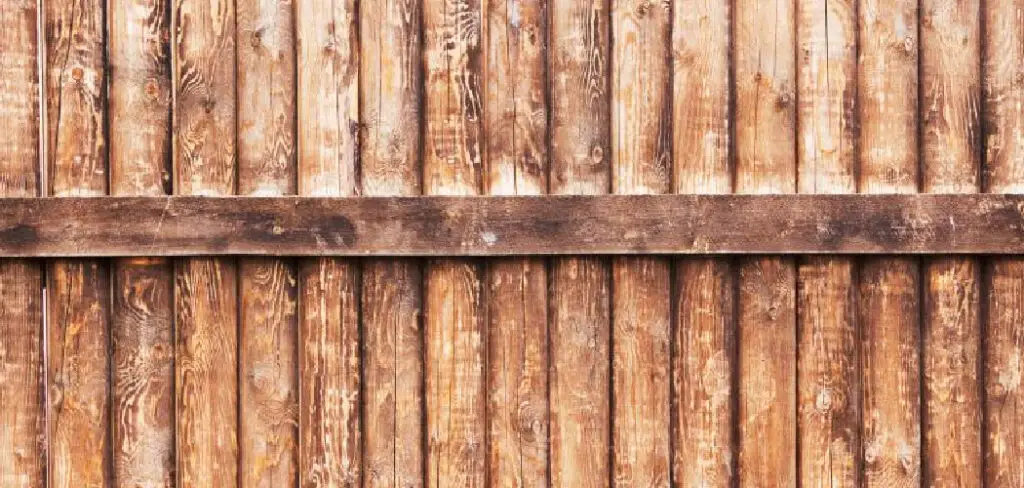
In this article, we will explore various methods on how to make an old fence look better, addressing common issues such as peeling paint, faded wood, or rusty hardware.
Whether your fence is made of wood, metal, or vinyl, these tips will guide you through practical and budget-friendly solutions to enhance its visual appeal, restoring its charm and making it a standout feature in your landscape once again.
The Importance of Enhancing the Appearance of Old Fences
The importance of enhancing the appearance of an old fence should not be underestimated. A fence serves as the frame for your property, contributing significantly to first impressions and curb appeal. Neglecting its maintenance and aesthetic can lead to a diminished perception of your home’s value and care.
Beyond aesthetics, revitalizing an older fence can also serve to protect your investment, as a well-maintained barrier endures against weathering and decay far longer than one left to degrade. In essence, giving attention to the appearance of your fence can enhance personal satisfaction while also improving the overall character and appeal of your home to neighbors and potential buyers.
Key Considerations and Strategies for Fence Revitalization
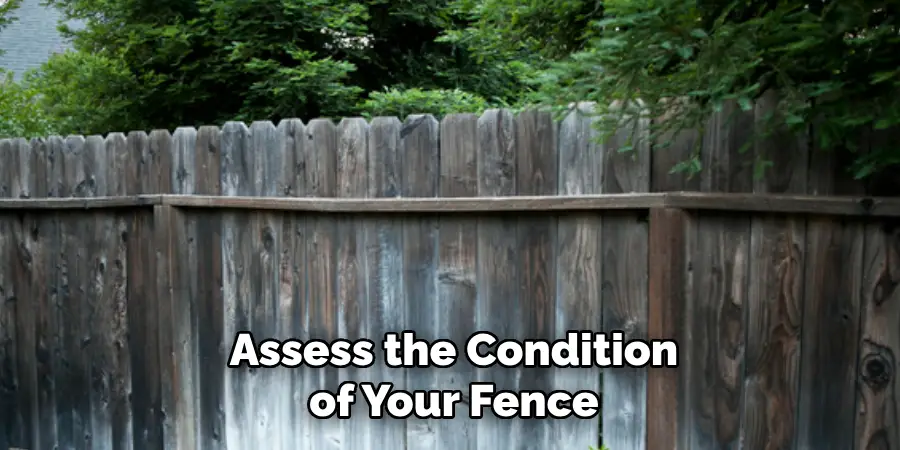
When planning to rejuvenate an old fence, there are several key considerations and strategies that will ensure a successful transformation.
Firstly, assess the condition of your fence to decide the extent of repair work needed. Dealing with any structural issues should be your top priority before focusing on aesthetics. For wooden fences, this might involve replacing rotting boards and securing loose parts. In the case of metal fences, it may require sanding away rust and fortifying weakened sections.
Once structural integrity is assured, cleaning is the next step. For all fence types, a good wash can remove years of grime and prepare the surface for further treatment. Wooden fences may then benefit from a fresh coat of paint or stain that not only enhances their appearance but also provides protection from the elements. When selecting paint or stain, consider the surrounding landscape and the style of your home for a cohesive look.
Adding landscaping around the fence can also significantly boost its appearance. Strategic placement of shrubs, flowers, or climbing plants can soften the look of a rigid structure and integrate it more naturally into your outdoor space.
Additionally, replacing or refurbishing hardware such as latches and hinges can be an easy update that makes a significant difference. These considerations, when executed thoughtfully, can revive the look of your old fence and make it a proud component of your home’s exterior.
Cleaning and Preparing the Surface
Before applying a new coat of paint or sealant, cleaning and preparing the surface of your fence is a crucial step. Start by removing any loose dirt, cobwebs, and debris with a stiff-bristled brush. If you’re dealing with a wooden fence, inspect for mildew or algae, which can be treated with a solution of bleach and water or a specialized wood cleaner.
For extensive cleaning, consider using a pressure washer set to a gentle setting to avoid damaging the wood fibers. For metal fences, rust and peeling paint can be tackled with a wire brush or sandpaper to ensure the surface is smooth and ready for priming.
Once the fence is clean, let it dry completely before moving on to repairs, painting, or staining. This not only ensures proper adhesion of new finishes but also prevents trapping moisture, which could cause further deterioration in the long term.
Assessing the Condition of the Fence
Evaluating the current state of your fence is the first critical step before beginning any revitalization efforts. Start by conducting a thorough inspection during a dry, bright day when all issues are easily visible.
Look for signs of structural damage such as broken, missing, or warped boards in wooden fences; bent or broken sections in metal fences; and cracks or warping in vinyl fences. It is imperative to check for stability – ensure that posts are securely set in the ground and that the fence can withstand external pressures.

Investigate for any signs of insect infestations or rot, common in wood, which may require more extensive repairs. By carefully assessing the entire perimeter of the fence, you can prioritize the repair needs and plan your restoration project effectively, ensuring that your efforts will be both efficient and enduring.
Repairing Damaged or Rotten Sections of the Fence
Repair work is an essential step in renewing your fence’s integrity and appearance. For wooden fences dealing with rot, begin by removing the damaged boards. Cut out the rotten portion and replace it with a fresh piece of lumber that matches the existing fence in size and type.
Ensure the new wood is treated for outdoor use to resist future decay. For metal fences, if you encounter minor damage, use a metal file to smooth out any dents or sharp edges. In the case of significant damage, welding may be required, or you may need to replace entire sections. When repairing vinyl fences, if you find cracks or breaks, these can often be fixed with a vinyl fence repair kit.
Follow the manufacturer’s instructions closely to patch up any damages effectively. Once all repairs are complete, take measures to protect the fixed areas with appropriate paint, stain, or rust inhibitor to prevent similar issues from arising in the future.
Applying a Fresh Coat of Paint or Stain
Once your fence is repaired and thoroughly cleaned, the next step is to apply a fresh coat of paint or stain. Begin by choosing a product that complements your home’s exterior and is suitable for the fence material and local climate.
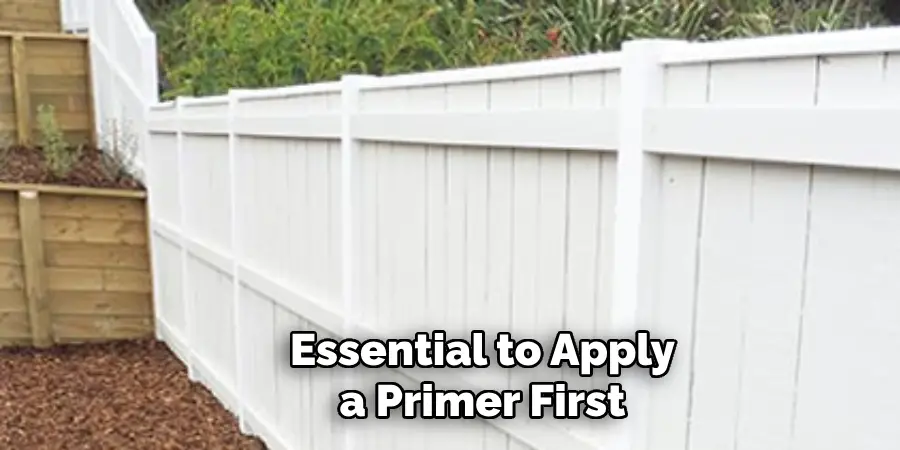
For wooden fences, opt for an outdoor paint or a stain that offers UV protection and water resistance. It’s essential to apply a primer first if you’re painting, to help the topcoat adhere better and last longer. When staining, select a stain with sealing properties to protect the wood from moisture.
Start the application process using a wide brush or a sprayer for more efficient coverage. Be methodical and work in sections to ensure an even coating. If using paint, let the first coat dry as per the manufacturer’s instructions before applying a second coat if necessary. For stains, follow the recommended number of coats to achieve the desired finish and protection.
10 Methods How to Make an Old Fence Look Better
1. Cleaning and Repairing:
Begin by thoroughly cleaning the fence to remove dirt, grime, and mildew buildup. Use a pressure washer or a mixture of water and mild detergent to scrub away the debris. Inspect the fence for any signs of damage such as loose boards, rotted sections, or rusty nails. Repair or replace damaged components to ensure the fence’s structural integrity.
Once the fence is clean and repaired, you can move on to staining or painting it. Choose a high-quality outdoor stain or paint that will protect the wood from weathering and give it a fresh new look. Consider using a sprayer for faster and more even coverage, but be sure to cover any nearby plants or surfaces to avoid overspray.
2. Applying a Fresh Coat of Paint or Stain:
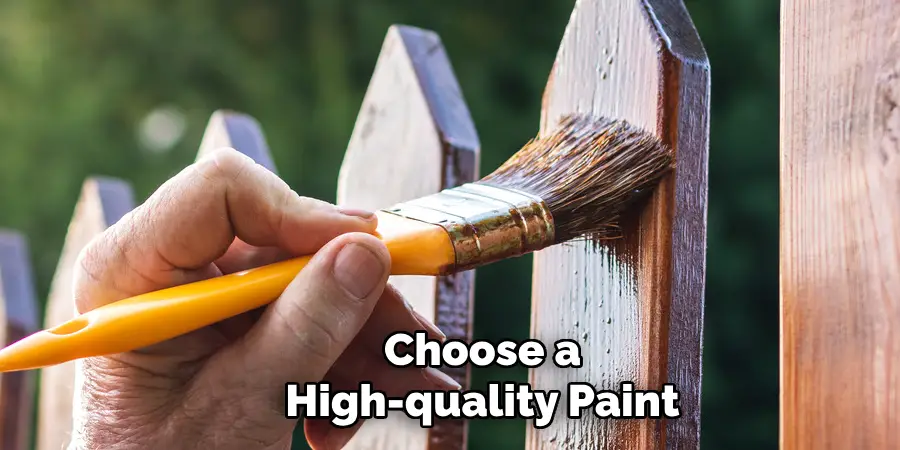
Choose a high-quality paint or stain suitable for the type of material your fence is made of (wood, metal, vinyl, etc.). Sand the surface lightly to remove any loose paint or stain and to smooth out imperfections.
Apply a primer coat to improve adhesion, followed by one or more coats of paint or stain in the desired color or finish. A fresh coat of paint can breathe new life into an old fence and give it a refreshed look. Staining can enhance the natural beauty of wood and protect it from the elements.
Once you have decided on the type of paint or stain to use, make sure you have all the necessary tools and materials.
This includes paint brushes, rollers, painter’s tape, drop cloths, and a ladder if needed. It is also important to choose a day with good weather conditions for painting or staining, as rain or extreme temperatures can affect the outcome.
3. Adding Decorative Accents:
Enhance the visual appeal of your old fence by adding decorative elements such as trim, lattice panels, or arbors. These features can add depth and dimension to your fence while creating visual interest.
Consider incorporating decorative post caps or finials for a touch of elegance. Experiment with different styles and materials to find the perfect accents that complement your fence’s design.
Additionally, adding potted plants or hanging baskets can bring life and color to your fence. Choose plants that thrive in your climate and complement the colors of your fence. For a more rustic look, consider incorporating climbing vines along the length of your fence. These natural elements can add a touch of charm and softness to your fence.
4. Installing Planters and Hanging Baskets:
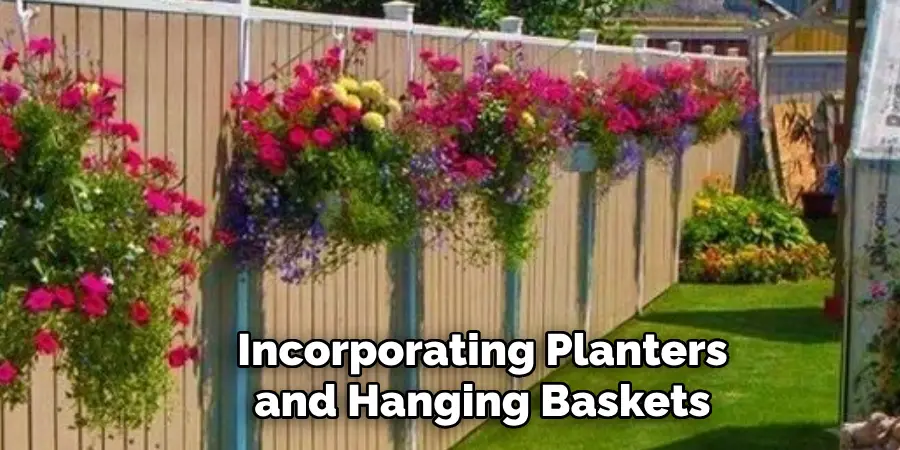
Incorporating planters and hanging baskets along the fence line can add color, texture, and beauty to your outdoor space. Choose a variety of flowers, herbs, or succulents to create a vibrant display that changes with the seasons. Hang baskets from hooks or install planter boxes directly onto the fence.
This simple addition can transform your old fence into a charming garden backdrop. Though installing planters and hanging baskets on a fence may seem like a daunting task, it can easily be done with these simple steps.
5. Introducing Climbing Plants:
Encourage climbing plants such as vines, ivy, or climbing roses to grow along your fence. These plants can soften the harsh lines of the fence and create a lush, natural backdrop. Install trellises or lattice panels to provide support for the plants to climb.
Be mindful of the plant’s growth habits and choose varieties that are well-suited to your climate and sunlight conditions. Additionally, make sure to regularly prune and train the plants to prevent them from overtaking your fence or causing damage.
Climbing plants not only add visual interest to your fence but also serve many practical purposes. They can provide privacy by covering up gaps in the fence or acting as a living screen.
Some climbing plants, such as jasmine, honeysuckle, or wisteria, also emit a lovely fragrance that can enhance the atmosphere of your outdoor space. These plants can also attract beneficial pollinators like bees and butterflies to your garden.
6. Concealing with Greenery:
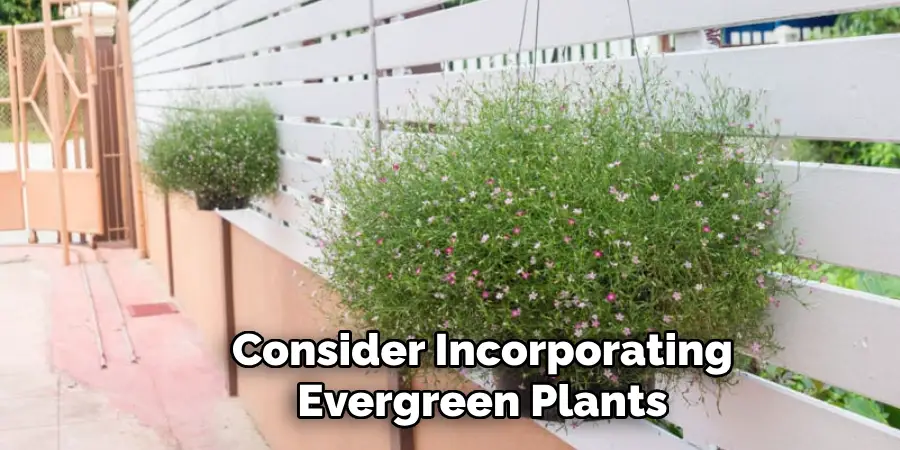
Planting shrubs, bushes, or tall grasses along the base of the fence can help conceal imperfections and soften its appearance. Choose plants that thrive in your local climate and require minimal maintenance. Consider incorporating evergreen plants for year-round coverage or flowering varieties for seasonal interest. Regular pruning and upkeep will ensure that the greenery remains tidy and well-maintained.
In addition to concealing imperfections, greenery can also add a touch of natural beauty and enhance the overall look of your fence. By carefully selecting plants that complement your fence’s style and color, you can create a cohesive and visually appealing outdoor space.
7. Adding Outdoor Lighting:
Illuminate your old fence with outdoor lighting fixtures to create a warm and inviting ambiance. Install solar-powered lights along the fence line or mount lanterns on fence posts for subtle illumination.
LED strip lights can be affixed to the underside of the top rail to cast a soft glow along the length of the fence. Outdoor lighting not only enhances the fence’s beauty but also improves safety and security around your property.
To further enhance the effect of outdoor lighting on your fence, consider using different colors and intensities. For a cozy and intimate atmosphere, opt for warm white lights or yellow-hued bulbs. If you want to create a more vibrant and festive mood, use colored lights in various hues.
Additionally, adjust the brightness of the lights based on the desired effect and location of your fence. For example, brighter lights may be more suitable for a backyard fence where you entertain guests, while softer lights can create a calming ambiance for a front yard fence.
8. Creating a Mural or Artwork:

Transform your old fence into a work of art by commissioning a mural or painting a decorative design. Hire a local artist to create a custom mural that reflects your personal style and interests.
Alternatively, unleash your creativity by painting a mural yourself or stenciling a pattern onto the fence. Consider themes such as nature, landscapes, or abstract designs that complement your outdoor environment.
Using a mural or artwork to enhance the appearance of your fence is a fun and creative way to add personality and charm to your outdoor space. Not only does it provide a unique focal point, but it also adds an artistic touch that can elevate the overall look of your property.
9. Installing Privacy Screens:
Increase privacy and seclusion by installing privacy screens or panels along your old fence. Choose from a variety of materials such as bamboo, reed, or vinyl to create a barrier that shields your outdoor space from prying eyes. Privacy screens can also reduce noise and block unwanted views while adding a touch of elegance to your fence.
Privacy screens are an excellent solution for those looking to add some privacy and seclusion to their outdoor space. These screens or panels are typically installed along an existing fence, providing a barrier that shields your yard from the outside world.
10. Maintaining Regular Care and Upkeep:
Finally, maintaining regular care and upkeep of your old fence is essential to preserving its appearance and longevity. Inspect the fence periodically for signs of wear, damage, or weathering, and address any issues promptly.
Clean the fence as needed to remove dirt, debris, and mold buildup.
Touch up paint or stain as necessary to protect the wood and maintain its vibrant color. With proper care, your old fence will continue to enhance your outdoor space for years to come.
In addition to regular inspections and cleaning, there are a few other maintenance tasks you can do to keep your old fence in top condition. One important task is trimming any nearby trees or bushes that could potentially damage the fence. Overgrown vegetation can put pressure on the structure, leading to warping or even breakage over time.
Conclusion
In conclusion, the journey to make an old fence look better is a testament to the transformative power of thoughtful restoration. By employing a combination of techniques such as cleaning, painting, and strategic landscaping, you can revitalize a weathered fence, breathing new life into your outdoor space.
Beyond the aesthetic benefits, this process also contributes to the overall maintenance and longevity of the fence, ensuring it stands resilient against the elements. Embrace the creative possibilities, tailor the approach to your specific fence material, and relish in the satisfaction of turning a tired barrier into a revitalized focal point of your property.
Thanks for reading, and we hope this has given you some inspiration on how to make an old fence look better!
About
Outdoor Fixes is a distinguished figure in the world of Diy design, with a decade of expertise creating innovative and sustainable Diy solutions.
His professional focus lies in merging traditional craftsmanship with modern manufacturing techniques,
fostering designs that are both practical and environmentally conscious. As the author of diy,
outdoorfixes delves into the art and science of outdoorfixes-making, inspiring artisans and industry professionals alike.
Education RMIT University
(Melbourne, Australia) Associate Degree in Design (Outdoor Fixes) Focus on sustainable design, industry-driven projects,
and practical craftsmanship. Gained hands-on experience with traditional and digital manufacturing tools, such as CAD and CNC software.
Nottingham Trent University
(United Kingdom) Bachelor’s in outdoorfixes.com and Product Design (Honors) Specialized in product design with a focus on blending creativity with production
techniques. Participated in industry projects, working with companies like John Lewis and Vitsoe to gain real-world insights.
Publications and Impact
In diy, Outdoor Fixes his insights on indoor design processes, materials, and strategies for efficient production.
His writing bridges the gap between artisan knowledge and modern industry needs, making it a must-read for both budding designers and seasoned professionals.

